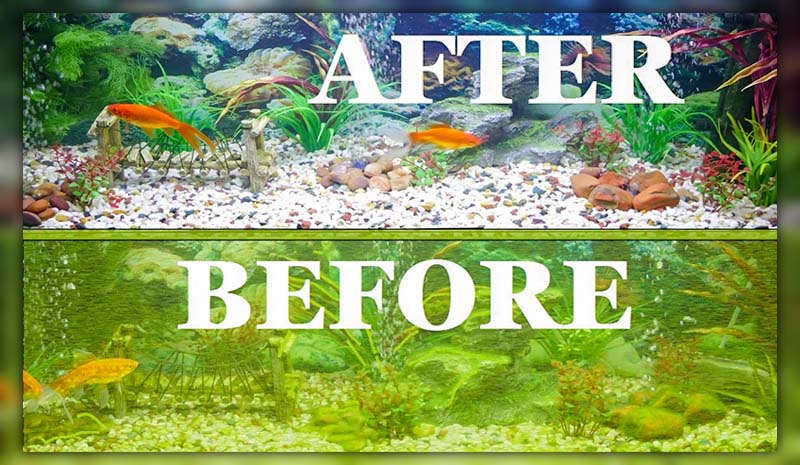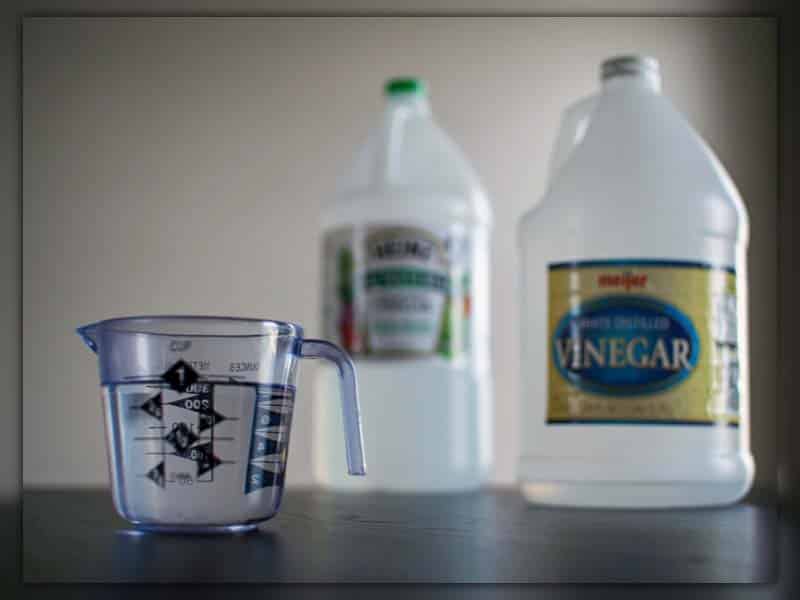Maintaining a healthy habitat for your pet fish is no small task. It demands regular cleaning, delicate care, and a safe method. So, let’s explore how to clean a fish tank with vinegar safely.
The Importance Of Regular Fish Tank Cleaning
Cleaning a fish tank with vinegar isn’t just about keeping it look nice and clean. It’s vital to your fish’s health. A clean tank means clean water, and clean water is life for fish.
Imagine this: you’re living in a room where the trash never gets taken out. Sounds awful, right? It’s the same with fish. If you don’t clean their tank, harmful stuff piles up. It harms them and can make them sick.
Regular cleaning keeps the water quality high. It stops the build-up of harmful chemicals. Your fish will be happier and healthier. And as a bonus, your tank will look shiny and new!

Steps To Clean Fish Tank With Vinegar
So, how to clean fish tank with vinegar? Follow these easy steps.
- Remove the fish: Carefully move your fish to a clean, safe container. Use some of the tank water to keep the conditions similar. Remember to wash your hands thoroughly before and after handling the fish to prevent contamination.
- Empty the tank: Take out all the water, decorations, and gravel. Be careful not to harm any live plants. Wear gloves to protect your hands from any debris, sharp objects, or potentially harmful substances.
- Prepare a vinegar solution: Mix a solution of 50% vinegar and 50% warm water. Ensure good ventilation while working with vinegar to avoid inhaling fumes.
- Scrub the tank: Using a soft cloth or sponge, scrub the tank with your vinegar solution. Be sure to clean every corner. Avoid using abrasive materials or brushes that can scratch the tank’s surface.
- Rinse and repeat: Rinse the tank with warm water. If there are still stains, repeat the scrubbing process. Thoroughly rinse the tank to remove any residual vinegar, as it can affect the water chemistry and harm the fish.
- Clean the gravel and decorations: In a separate bucket, clean your decorations and gravel with the vinegar solution. Rinse thoroughly. Avoid using salt or baking soda when cleaning gravel or decorations, as they can be harmful to the fish.
- Fill and check the tank: Fill the tank with water and check the pH level. Make sure it’s safe before returning your fish to their clean home. Test the water parameters, including pH, ammonia, nitrite, and nitrate levels, to ensure a suitable environment for the fish.
Cleaning your fish tank with vinegar is safe, effective, and easy. It’s an eco-friendly way to maintain a healthy, happy environment for your fish.
Source: Bob Moss Nano Tanks
Cleaning Fish Tank With Vinegar And Salt
Sometimes, tough mineral deposits and algae may resist plain vinegar. In such cases, cleaning a fish tank with vinegar and salt can work wonders. Remember, salt should never come into contact with your fish.
Salt acts as a mild abrasive that can help scrub away stubborn stains without scratching your tank. Here’s how you do it:
- Remove your fish and empty the tank, same as before.
- Make a paste with equal parts of vinegar and salt. Stir until it’s fully mixed.
- Apply the paste to tough spots using a soft cloth or sponge.
- Let it sit for about 10-15 minutes.
- Rinally, scrub away the paste. Rinse the tank thoroughly with warm water. Ensure all traces of salt are removed before reintroducing your fish.
Remember, salt should never come into contact with your fish. Always rinse thoroughly and check your water’s salinity before returning your fish to the tank.

Cleaning Fish Tank With Vinegar And Baking Soda
Baking soda and vinegar make a powerful cleaning team. Cleaning a fish tank with vinegar and baking soda can effectively tackle grimy stains and stubborn mineral deposits. Here’s the procedure:
- Remove your fish and empty the tank, as always.
- Sprinkle baking soda on the stubborn stains.
- Spray or apply vinegar on the baking soda. It will fizz, and that’s a good sign!
- Let the mixture sit for about 15-20 minutes. It will loosen up the stubborn grime.
- Gently scrub the spots with a soft cloth or sponge.
- Rinse the tank thoroughly with warm water. Ensure all traces of baking soda are removed, as it can affect the pH level of your tank.
Remember, baking soda can drastically change the pH level of your tank. Ensure all traces are removed, and the pH level is suitable before reintroducing your fish.

Conclusions On Cleaning Tank With Vinegar
In conclusion, cleaning fish tank with vinegar methods provide an eco-friendly and safe option. Whether used alone or in combination with salt or baking soda, vinegar is effective in maintaining the cleanliness of your fish tank.
Remember, the safety and health of your fish should always be your first priority. Make sure to rinse thoroughly and check all water parameters after each cleaning. With the right steps, vinegar can keep your tank gleaming and your aquatic friends happy and healthy!




